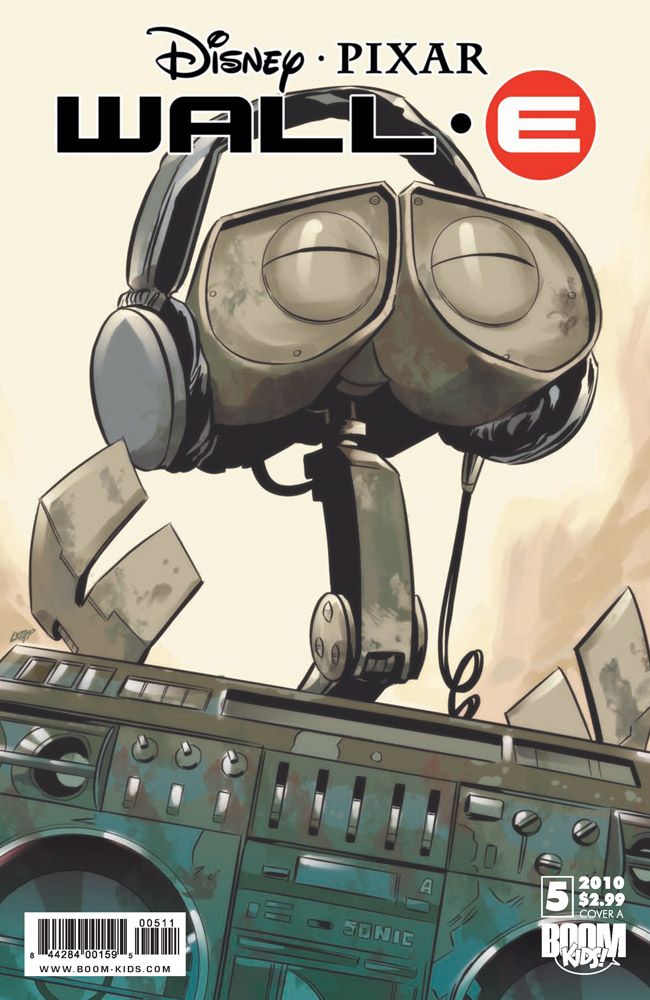Wall-E #5 is the second part of a storyline that started last month, but comes without baggage. Issue #4 was very light on plot; it's only with this issue that events are set in motion. The comic keeps in the spirit of the movie, picking up on the strongest storytelling elements of the first half hour of the movie, while using thematic elements from the second half to its advantage.
In this issue, a rocket ship crash lands on earth, and an astronaut jumps out. He's disoriented and confused, looking for his lost family on a garbage-plagued abandoned earth, but Wall-E is there to help him out. And so the buddy team-up adventure begins. . .
Bryce Carlson's story takes place before the events of the movie, and the major plot device is kind of obvious from the start, but the storytelling is so strong and the artwork so inviting that you can't help but be sucked in. Morgan Luthi works wonders in translating CGI characters into pen and ink creations, using Wall-E's expressive eyes to sell the story, particularly given the limited animation possible with his body. While dialogue is relatively sparse, the comic demands your attention with great gesticulation and a straight-forward storytelling style. Luthi maintains a grid method of storytelling, though he varies the number of panels per tier and even the number of tiers from page to page.
The silent storytelling may seem like a breeze to flip through, but it forces you to pay more attention to the art, thus slowing you down. Luthi's storytelling is clear, and all the little changes between panels to indicate actions are a pleasure to watch unfold. The art never gets bogged down in details, the way an overly rendered garbage planet easily could. Luthi knows how to pick his battles and use them to their best effect.
The art has a very animated feel to it. I don't know where Luthi came from but I'm assuming it's an animation background. Even the truck bounds over the hills -- leaving a shadow on the ground -- when it gets away from Wall-E. Combined with a simpler color scheme from Digikore Studios that's light enough to show off the art, the comic -- which could be bleak and dirty -- comes alive on the page.
Letterer Jose Macasocol Jr. gets credit for matching tones of voice to the choices of word balloons and lettering. Wild, excited shouts get larger balloons and bouncier tales. More timid voice have smaller balloons with technically precise smaller lettering.
And, as a cute bonus gag, the credits list "Write-R," "Pencil-R," "Edit-R," etc. Oh, and Wall-E's gruff boss is aptly named "Bull-E."
The "Wall-E" comic is telling a simple story that fits in well with the overall legend of the movie. This second part of the story arc does a much better job than the first in putting things into motion, though I would like to see faster progress made and maybe an extra panel here and there to solidify the storytelling. Still, the art captures a great feeling in the story, and the whole package is well put together.

